Styling Floral Decor Using Vintage Art Prints
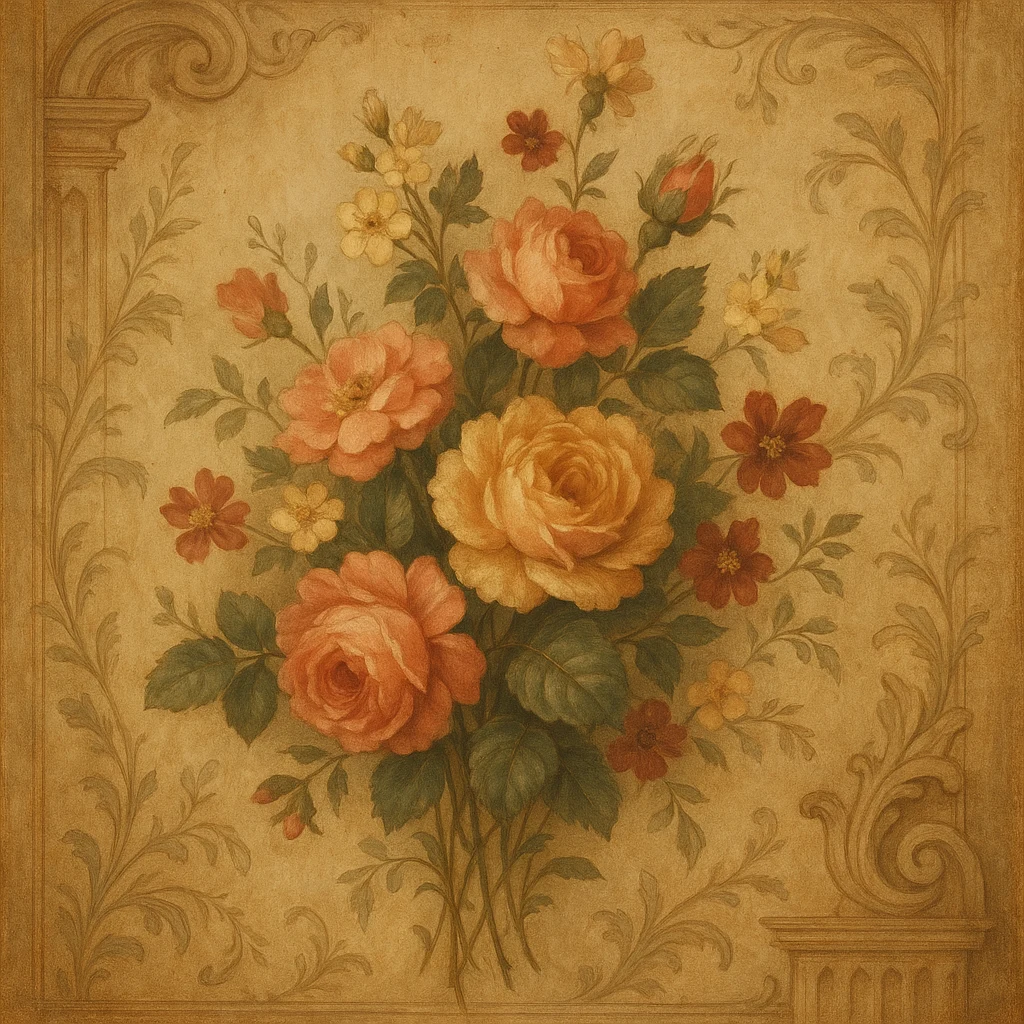
Styling Floral Decor Using Vintage Art Prints
Floral decor using vintage art prints combines the timeless beauty of botanical imagery with the nostalgic charm of bygone eras. This decorative approach has experienced a remarkable resurgence in recent years, transcending traditional boundaries to find its place in contemporary homes, cottagecore retreats, and even minimalist spaces. Vintage is having a major moment across interior design spheres, with Pinterest searches for “vintage wall decor” increasing by 85% since 2021 as decorators seek authentic character and sustainability in their styling choices.
From delicate Victorian botanical illustrations to bold mid-century floral patterns, these pieces offer a touch of history, beauty, and natural elements that effortlessly enhance any room.
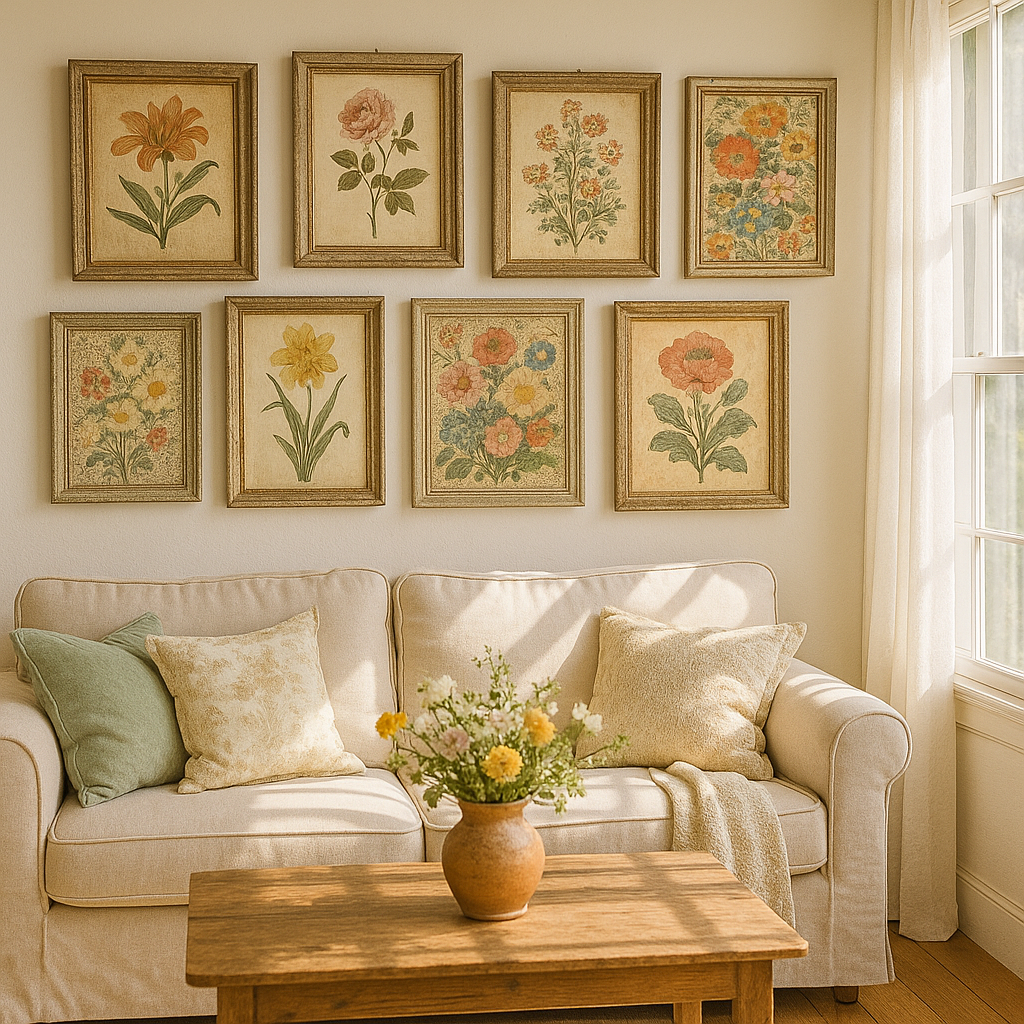
In this guide, you’ll discover how to select, source, arrange, and style vintage floral art prints to create spaces that feel both curated and personal, regardless of your overall interior aesthetic.
Why vintage floral art prints?
Styling floral decor using vintage art prints offers more than just visual appeal—it brings layers of history, craftsmanship, and emotional resonance to your spaces. Floral imagery has adorned human dwellings since ancient times, from Egyptian tombs to Renaissance palaces, always representing growth, beauty, and the ephemeral nature of life.
Vintage floral wall art carries this tradition forward while adding the distinct aesthetic qualities of its era. A 1950s poppy print brings mid-century optimism, while Victorian botanical illustrations offer scientific precision and delicate beauty. These historical connections give your decor depth that mass-produced contemporary pieces often lack.
Beyond aesthetics, floral art creates psychological benefits in our living spaces. Studies have shown that even images of nature can reduce stress and improve mood. Vintage florals combine this biophilic effect with nostalgia—another powerful emotional trigger that creates feelings of comfort and security.
Perhaps most importantly, vintage prints offer unique character that’s increasingly valued in our era of mass production. Each piece comes with its own story, whether it’s slight imperfections from age, distinctive printing techniques no longer used today, or artistic styles that perfectly capture a moment in design history.
Modern vs. traditional: when vintage florals work best
Vintage floral art prints demonstrate remarkable versatility across different interior styles. In cottagecore or farmhouse settings, they reinforce the rustic, nostalgic aesthetic with their aged patina and traditional imagery. Frames in weathered wood or chipped paint enhance this effect, creating spaces that feel like they’ve evolved naturally over decades.
For modern interiors, vintage florals create compelling contrast when displayed in contemporary frames or arranged in clean, geometric groupings. The juxtaposition of old and new creates visual interest while the natural subject matter softens minimal spaces that might otherwise feel stark.
Eclectic spaces benefit from vintage floral prints as anchoring elements that can tie together diverse decorative objects through color, theme, or era. A collection of botanical prints from different periods creates cohesion while still allowing for creative freedom throughout the rest of the room.
Sourcing and selecting your vintage floral art prints
Finding the perfect vintage floral prints requires knowing where to look and what to look for. For truly authentic pieces, explore estate sales, flea markets, antique shops, and thrift stores where forgotten treasures often hide in plain sight. Online marketplaces like Etsy, eBay, and specialized vintage print dealers offer broader selection but require careful assessment of authenticity and condition.
Let’s be honest: not everything that looks old is the real deal. Genuine vintage prints often show signs of age that can’t be perfectly replicated—slight foxing (brownish spots), gentle fading, and paper with a distinct texture and weight.
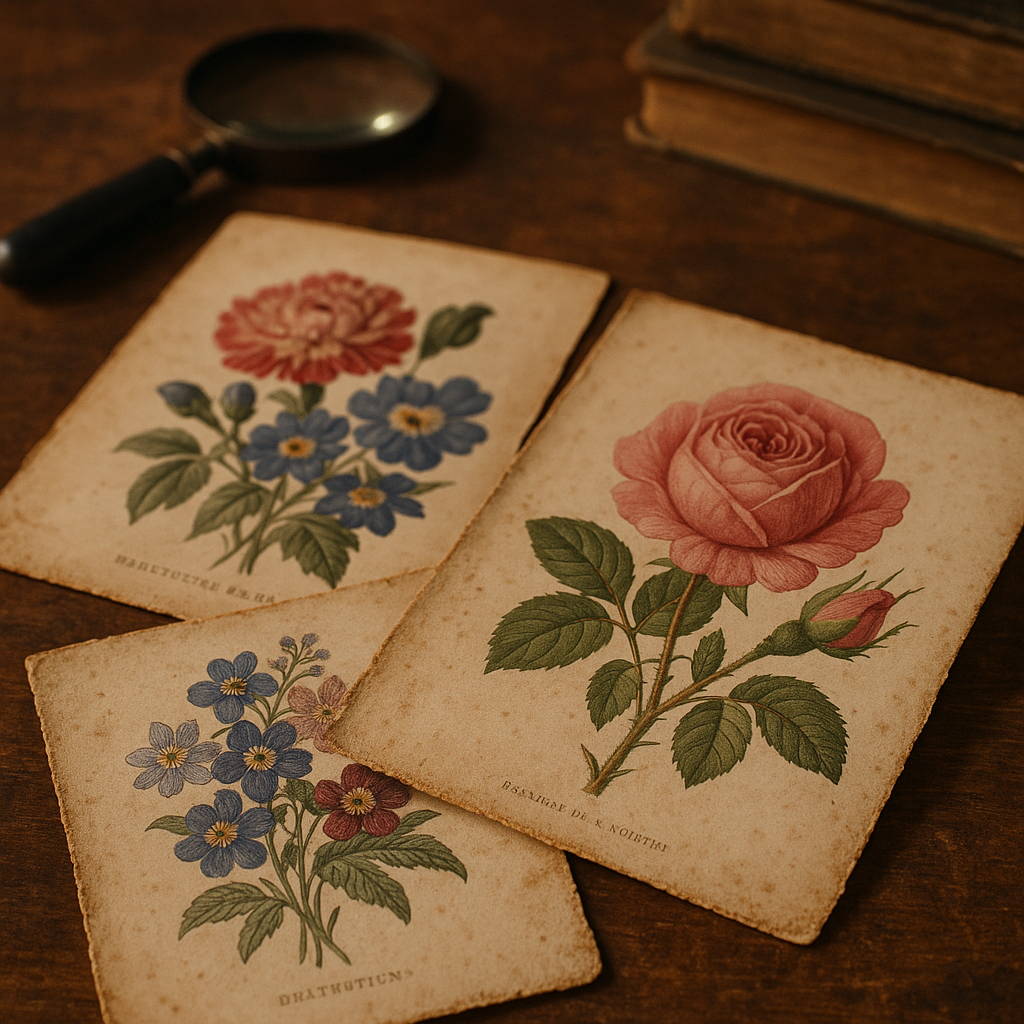
Look for publishing information, artist signatures, and printing techniques consistent with the era. Wood engravings, lithographs, and screen prints each have distinctive characteristics that help date and authenticate them.
For those who love the vintage aesthetic but prefer the convenience and accessibility of reproductions, many quality options exist. Modern reproductions offer perfect condition, custom sizing, and often lower prices. Companies specializing in historical botanical, ornithological, and decorative prints create high-quality reproductions using archival materials that will last for generations.
When selecting prints, consider their relationship to your space and other decor elements. Look for color palettes that complement your existing design scheme or introduce controlled contrast. Subject matter can range from precise botanical illustrations to impressionistic garden scenes or bold stylized florals—each creates a different mood and visual impact.
Framing & preparing art for display
The right frame transforms a vintage print from a mere piece of paper to a striking decorative element. Original frames, when available and in good condition, maintain historical authenticity and often feature craftsmanship no longer common today. However, don’t hesitate to reframe if the original is damaged or detracts from the artwork.
For framing vintage prints, consider these options:
- traditional wood frames in styles matching the print’s era (ornate Victorian, clean mid-century, etc.)
- simple gallery frames that put focus on the artwork itself
- metal frames for industrial or contemporary spaces
- floating frames for delicate or three-dimensional pieces
Proper matting is crucial for preserving vintage prints. Always use acid-free, archival materials to prevent discoloration and deterioration. The mat color should complement the artwork—neutral whites, creams, and soft grays work well for most botanical prints, while colored mats can accentuate specific hues within more vibrant floral artwork.
Glass options matter too—standard glass is affordable but creates glare, while museum glass offers UV protection and anti-reflective properties that better protect and showcase delicate vintage pieces. For larger frames, consider plexiglass to reduce weight and breakage risk.
Explore our blooming collection of ready-to-frame vintage floral prints, curated specifically for today’s design-conscious homes, with options spanning three centuries of botanical artistry.
Creating a cohesive vintage floral gallery wall
A well-designed gallery wall turns individual vintage prints into a cohesive artistic statement.
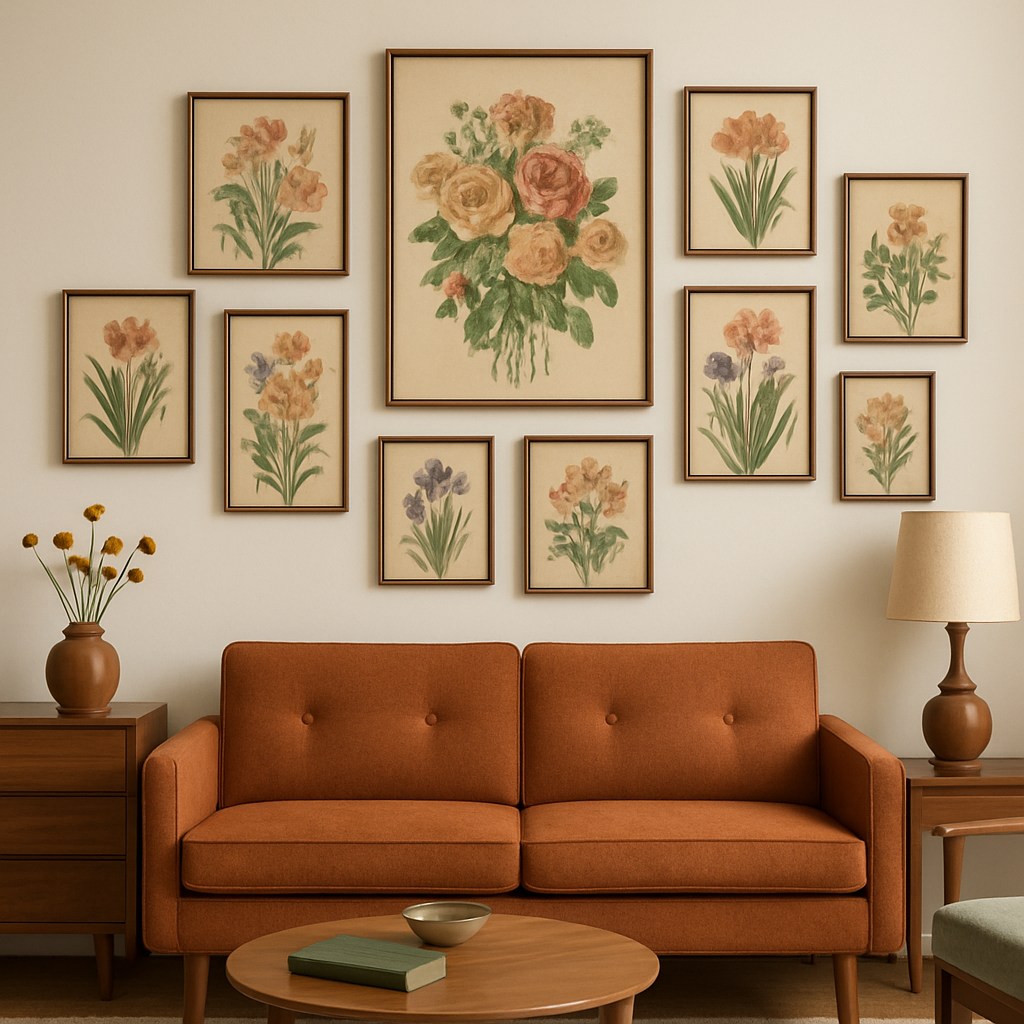
Start by determining your arrangement strategy—symmetrical layouts create formality and order, while asymmetrical groupings offer dynamic visual interest and easier expansion over time.
Before hanging anything, plan your layout on the floor. This allows experimentation without committing to wall holes. For balanced composition, follow these principles:
- anchor your arrangement around one or two larger statement pieces
- maintain consistent spacing between frames (typically 2-3 inches)
- create visual flow through complementary colors or thematic connections
- vary frame sizes while keeping proportions harmonious
When working specifically with vintage floral prints, consider organizing by botanical families, color palettes, or artistic styles. A collection of rose illustrations through different eras tells a visual story of both horticultural and artistic evolution. Alternatively, grouping diverse flowers by color creates immediate visual cohesion despite differences in style or period.
For installation, use proper hanging hardware rated for your frame weights, and consider picture-hanging strips for lighter pieces. Templates cut from kraft paper make positioning easier—trace each frame, mark hanger positions, then tape templates to the wall to visualize the final arrangement before committing.
Balancing old and new – mixing eras and styles
The most dynamic gallery walls often combine elements from different periods. Victorian botanical illustrations can harmonize beautifully with mid-century floral abstractions when unified through thoughtful framing or color echoes. This approach creates visual conversation between pieces while showcasing the evolution of floral representation through art history.
When mixing frames, identify one unifying element—perhaps consistent finish, material, or profile—while allowing variation in other aspects. For example, all gold frames but in different widths and styles, or consistently thin profiles in various finishes. This creates cohesion without monotony.
Don’t limit your gallery to just prints. Incorporating three-dimensional elements adds textural interest and breaks the visual flatness. Consider including:
- vintage mirrors with decorative frames
- pressed flowers in shadow boxes
- decorative plates with floral motifs
- small sculptural elements like wall sconces
For those seeking authentic retro wall art with floral themes, our hand-selected collection features original prints spanning from Victorian botanical illustrations to vibrant mid-century florals, each capturing the distinctive artistic styles of their era.
Bringing the look home—practical styling tips and inspiration
Moving beyond gallery walls, vintage floral prints can enhance nearly every room in your home through thoughtful placement and styling. In entryways, a single statement botanical print creates an immediate impression, while a small grouping offers visual interest during coming and going. Hallways benefit from a linear arrangement that draws the eye forward and turns transitional spaces into galleries.
Bedrooms offer perhaps the most natural setting for floral artwork, where their natural beauty promotes relaxation.
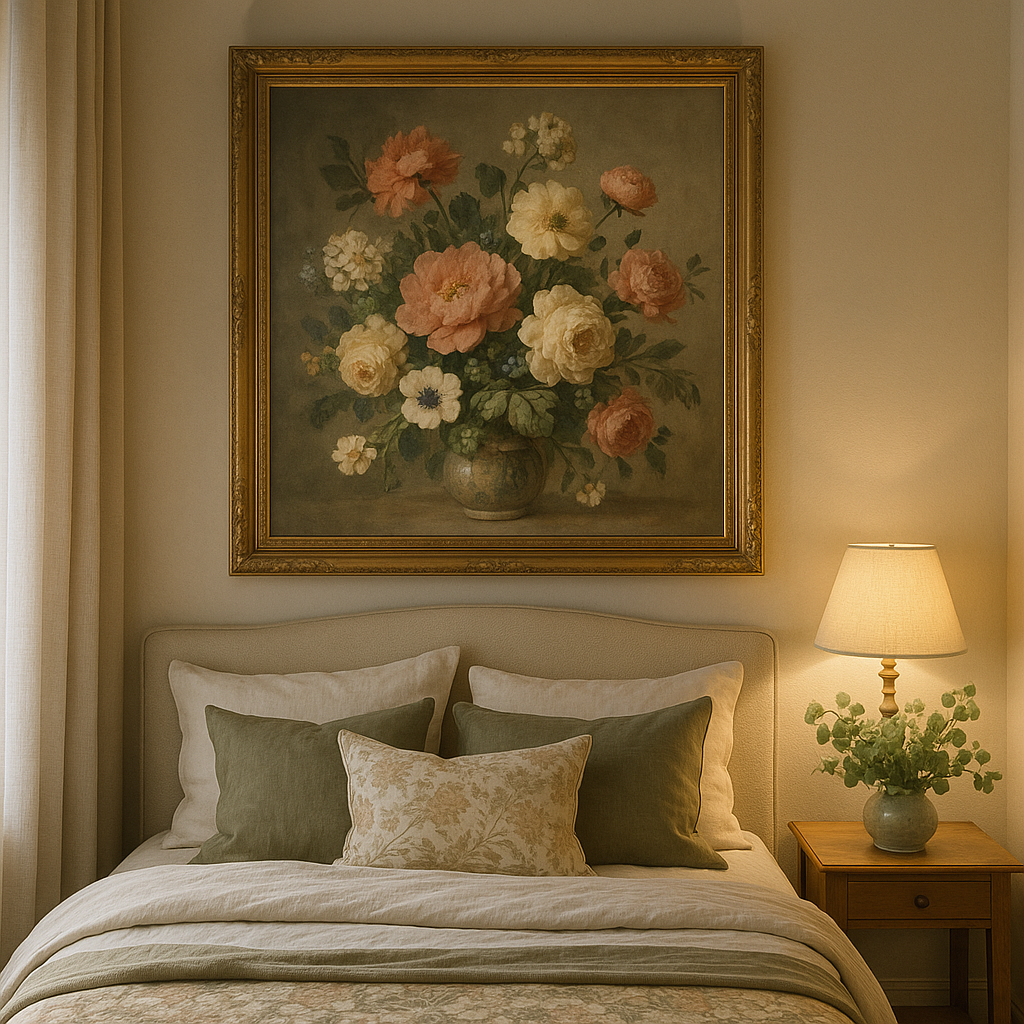
Position a large botanical print above the headboard as a focal point, or arrange a small collection on the wall opposite the bed to create a view that bookends your day.
In living spaces, consider these practical arrangements:
- above a sofa: center a large print or create a balanced arrangement at eye level when seated
- flanking a fireplace: matching sized prints (though not necessarily matching images) create symmetry
- floating shelves: lean smaller framed prints among books and objects for casual display
When styling around your art, use color cues from the prints themselves. Pull secondary colors from the artwork into cushions, throws, or ceramics to create subtle connections throughout the room. This creates cohesion without obvious matching.
For seasonal refreshes, rotate floral prints to reflect nature’s current state—spring blossoms in April, lush garden scenes in summer, botanical seed studies for autumn, and evergreen illustrations during winter months. This practice not only keeps your decor feeling current but also helps preserve vintage prints by limiting light exposure.
Maintenance matters with vintage pieces. Position valuable prints away from direct sunlight, which causes fading and paper deterioration. Dust frames regularly with a soft microfiber cloth, and occasionally check for signs of moisture damage or insect activity. These simple practices ensure your vintage floral collection remains beautiful for years to come.
Our fascination with vintage aesthetics speaks to deeper human needs for authenticity, craftsmanship, and connection to the past—qualities perfectly embodied in floral art prints that have stood the test of time.
Conclusion
Vintage floral art prints offer endless possibilities for adding character, history, and natural beauty to our living spaces. From creating dramatic gallery walls to placing thoughtful accents throughout your home, these timeless pieces bridge the gap between nature and interior design, between past and present.
What makes vintage floral prints particularly special is their versatility—they complement almost any decor style when thoughtfully selected and presented. Whether you’re drawn to scientifically precise botanical illustrations, romantically rendered garden scenes, or boldly stylized mid-century florals, these pieces bring the eternal charm of flowers indoors in ways that feel both fresh and timeless.
As you build your collection, remember that the most successful vintage print displays reflect personal taste rather than rigid design rules. Mix periods and styles, experiment with framing choices, and don’t hesitate to place a Victorian botanical print in a thoroughly modern room if it speaks to you.
Start your own vintage floral art wall today, beginning with just one or two special pieces that resonate with your aesthetic sensibilities. Over time, let your collection grow organically, adding prints that catch your eye and tell your unique story through the universal language of floral beauty.
Frequently asked questions
How can I tell if a floral art print is truly vintage or just a reproduction?
Look for unique signs of age, check signatures, research the artist, and compare print quality and materials.
What styles of frames work best with vintage floral prints?
Gilded, ornate wood, distressed, or minimalist black/gold frames can all suit, depending on the print and room decor.
Can I mix vintage floral art with modern interiors?
Absolutely—mixing eras adds personality; use color palettes to link vintage art with contemporary furniture.
Where is the best place to display a gallery of floral vintage prints?
Hallways, bedrooms, dining rooms, and entryways all make great spots; consider wall size and natural light.
How do I care for and maintain vintage art prints?
Keep away from direct sunlight, use acid-free matting, dust gently, and rotate displays to avoid fading.